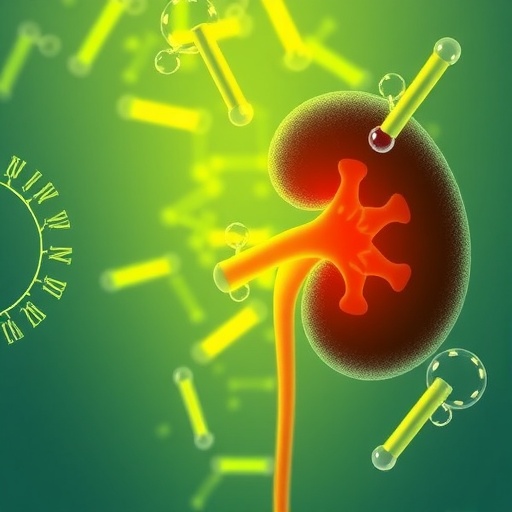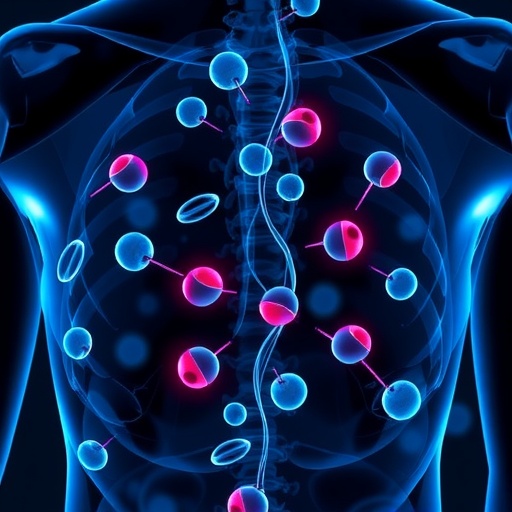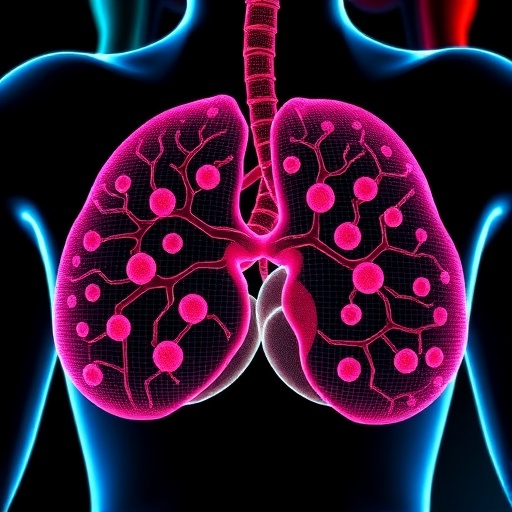Breaking New Ground in Forensic Medicine: How Hypothermia Alters Kidney Metabolism and Lipid Dynamics
In a groundbreaking study that promises to reshape forensic pathology and deepen our understanding of cellular metabolism under extreme conditions, researchers have unveiled compelling evidence that hypothermia—the state of abnormally low body temperature—triggers a profound metabolic shift in kidney cells. This shift centers around the upregulation of fatty acid transporter 1 (FATP1) and the associated accumulation of lipids within the renal tubules, as documented through meticulous forensic case investigations. Far beyond a mere descriptive account, the findings elucidate a complex biochemical cascade, offering novel insight into how the human body responds at a molecular level during hypothermic stress. Such revelations not only augment forensic diagnostic tools but also portend new avenues in clinical nephrology and metabolic disease research.
The kidneys, while less frequently spotlighted in hypothermia studies compared to organs like the brain or heart, exhibit remarkable adaptability when the body temperature plunges. At the core of the current research is FATP1, a membrane protein responsible for ferrying long-chain fatty acids across the cellular membrane into kidney tubular cells. Fatty acids, beyond their role as fuel substrates, participate in membrane remodeling and signal transduction. The study compellingly demonstrates that under hypothermic conditions, FATP1 expression surges, instigating an influx of fatty acids that then accumulate as lipid droplets within renal tubular epithelial cells. This phenomenon challenges traditional beliefs about hypothermia’s metabolic impact, suggesting that lipid metabolism is dynamically rewired in response to reduced thermal states.
.adsslot_5KAVDBRajF{width:728px !important;height:90px !important;}
@media(max-width:1199px){ .adsslot_5KAVDBRajF{width:468px !important;height:60px !important;}
}
@media(max-width:767px){ .adsslot_5KAVDBRajF{width:320px !important;height:50px !important;}
}
ADVERTISEMENT
The investigative team employed rigorous forensic case analysis, leveraging renal tissue obtained post-mortem from individuals who succumbed to hypothermia. This unique approach permitted an in vivo correlation between hypothermic insult and molecular alterations in renal tissues, freeing the research from the constraints of ex vivo or animal models. Histological examinations revealed conspicuous lipid deposits in the tubular epithelium, confirmed by specific staining techniques sensitive to neutral lipids such as Oil Red O staining. Concurrently, immunohistochemical assessments pinpointed a distinct enhancement of FATP1 expression in affected cells, illustrating a robust relationship between transporter upregulation and lipid build-up.
Beyond morphological characterizations, advanced molecular assays identified transcriptional modulations driving FATP1 expression. Hypothermia appears to activate signaling pathways that enhance the transcriptional machinery responsible for FATP1 gene expression. Among these pathways, the involvement of cold-induced transcription factors and metabolic sensors has been hypothesized, including potential regulators such as PPAR family members (peroxisome proliferator-activated receptors), which regulate fatty acid uptake and metabolism. This transcriptional regulation reflects a strategic cellular adaptation designed to preserve energy homeostasis and membrane integrity during cold stress.
Mechanistically, the accumulation of lipids within renal tubules during hypothermia may serve several adaptive functions. It is postulated that stored lipids function as an energy reservoir during times when metabolic rates slow dramatically due to low temperatures. Additionally, the lipid droplets may contribute to cellular membrane fluidity regulation, counterbalancing the rigidifying effects of cold on lipid bilayers. By dynamically adjusting lipid content and composition, renal cells could maintain vital membrane-based processes such as ion transport and receptor signaling, enhancing survival prospects in hypothermic states.
Importantly, the findings carry significant forensic implications. In forensic pathology, post-mortem changes and cause-of-death determinations often rely on subtle histological and biochemical markers. The identification of lipid accumulation linked to FATP1 upregulation offers a novel biomarker for hypothermia-related fatalities. This marker could complement existing diagnostic criteria, enabling more precise differentiation between hypothermia and other causes of death with overlapping pathology. Furthermore, the molecular signature of FATP1 upregulation may aid in timelines reconstruction by indicating the duration and severity of hypothermic exposure.
From a broader perspective, the study resonates with burgeoning fields examining metabolic adaptations in extreme environments and contexts such as therapeutic hypothermia, organ preservation, and metabolic syndrome. The renal tubule’s response to temperature underscores the plasticity of fatty acid transport systems and the potential for modulating these pathways in clinical scenarios. For example, controlled manipulation of FATP1 or lipid metabolism could mitigate renal injury during surgeries requiring lowered body temperature or cold storage conditions for transplantation.
The researchers also emphasize that lipid metabolism alterations in the kidney during hypothermia may not be uniformly beneficial. Excessive lipid accumulation, or lipotoxicity, can provoke inflammation, oxidative stress, and cellular dysfunction. Hence, distinguishing adaptive from maladaptive lipid responses constitutes an important future direction. Developing pharmacological agents that finely tune FATP1 activity could prevent deleterious lipid overload, balancing the protective and pathological aspects of these metabolic shifts.
In terms of methodology, this study’s multi-modal approach—combining histology, immunohistochemistry, gene expression profiling, and forensic pathology—sets a new standard for investigating tissue responses post-mortem. It vividly illustrates the power of forensic material as a window into pathophysiological processes, providing insights unattainable in living subjects due to ethical or technical limitations. Such comprehensive profiling also encourages interdisciplinary collaboration between forensic scientists, nephrologists, and molecular biologists, enriching the collective knowledge base.
Looking ahead, the mechanistic insights into FATP1 regulation also raise intriguing questions about temperature-sensitive control of lipid transport in other organs and systems. Similar mechanisms may exist in the brain, heart, or adipose tissue, suggesting a systemic organization coordinated by thermoregulatory centers. Integrating these findings with whole-body metabolic studies could revolutionize our understanding of how mammals manage energy substrates under thermal stress.
As hypothermia remains a significant cause of death worldwide, whether accidental or therapeutic, augmenting the diagnostic toolkit with molecular markers like FATP1 expression is a notable advancement. It bridges clinical need with molecular science, exemplifying translational research that improves both patient care and forensic accuracy. Additionally, this work spotlights the kidney as an active participant in thermoregulatory metabolism, challenging prior presumptions of its passive role during cold stress.
In summary, the revelation that hypothermia drives FATP1 upregulation and consequent lipid accumulation in renal tubules not only enriches forensic medicine but also provides a fundamental insight into cellular adaptation to thermal extremes. It paves the way for innovative diagnostic and therapeutic strategies, emphasizing lipid transport modulation as a critical axis. This knowledge may soon transform clinical management of hypothermic patients and enhance the precision of forensic investigations, exemplifying the profound impact of molecular research on applied medical disciplines.
Subject of Research: Hypothermia-induced metabolic changes in renal tubules, specifically the upregulation of fatty acid transporter 1 and associated lipid accumulation.
Article Title: Hypothermia drives fatty acid transporter 1 upregulation and lipid accumulation in renal tubules: evidence from forensic cases.
Article References:
Horioka, K., Tanaka, H., Hayakawa, A. et al. Hypothermia drives fatty acid transporter 1 upregulation and lipid accumulation in renal tubules: evidence from forensic cases. Int J Legal Med (2025). https://doi.org/10.1007/s00414-025-03550-x
Image Credits: AI Generated
Tags: biochemical response to low body temperaturefatty acid transporter 1 (FATP1) roleforensic pathology advancementshypothermia and kidney metabolismhypothermic stress and cellular responseimplications for clinical nephrologykidney adaptability under extreme conditionslipid accumulation in renal tubuleslipid dynamics in renal functionmetabolic shifts in kidney cellsnovel insights into human metabolismresearch on metabolic diseases





